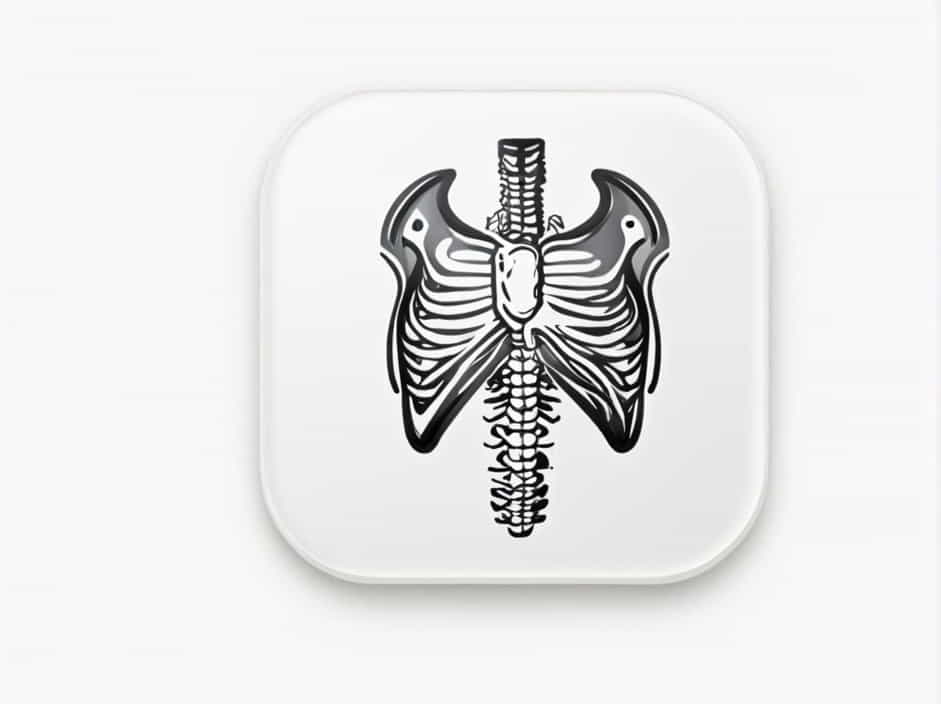The pectoral and pelvic girdles play a crucial role in supporting the limbs and connecting them to the axial skeleton. These structures not only provide attachment points for muscles but also facilitate movement, stability, and weight-bearing functions.
The pectoral girdle, also known as the shoulder girdle, consists of bones that support the upper limbs. Meanwhile, the pelvic girdle forms a strong foundation for the lower limbs and supports the weight of the body. Understanding the number of bones in these girdles and their functions helps in comprehending human anatomy and movement.
Bones in the Pectoral Girdle
The pectoral girdle consists of four bones, with two on each side of the body. These bones connect the arms to the torso and allow a wide range of motion.
1. Clavicle (Collarbone) – 2 Bones
- The clavicle is an S-shaped bone located at the base of the neck.
- It connects the sternum (breastbone) to the scapula (shoulder blade).
- Functions:
- Provides structural support to the shoulder.
- Helps with force transmission between the upper limb and the axial skeleton.
- Protects underlying nerves and blood vessels.
2. Scapula (Shoulder Blade) – 2 Bones
- The scapula is a triangular, flat bone positioned on the upper back.
- It articulates with both the clavicle and the humerus (upper arm bone).
- Functions:
- Provides attachment points for muscles involved in shoulder and arm movement.
- Enables a wide range of motion, including elevation, depression, and rotation.
Total Number of Bones in the Pectoral Girdle: 4 Bones
- 2 Clavicles + 2 Scapulae = 4 Bones
Bones in the Pelvic Girdle
The pelvic girdle consists of two large hip bones (coxal bones), each made up of three fused bones. It connects the lower limbs to the spine and provides support for weight-bearing activities.
1. Ilium – 2 Bones (One on Each Side)
- The ilium is the largest and uppermost part of the hip bone.
- It forms the iliac crest, which serves as an attachment site for muscles.
- Functions:
- Supports body weight when standing and walking.
- Provides attachment points for abdominal and lower limb muscles.
2. Ischium – 2 Bones (One on Each Side)
- The ischium forms the lower and back part of the hip bone.
- It includes the ischial tuberosity, which bears weight when sitting.
- Functions:
- Supports the body in a seated position.
- Provides attachment for muscles of the thigh and pelvis.
3. Pubis – 2 Bones (One on Each Side)
- The pubis forms the front portion of the hip bone.
- It connects at the pubic symphysis, a cartilage joint that allows slight movement.
- Functions:
- Contributes to stability and balance.
- Protects internal reproductive and urinary organs.
Total Number of Bones in the Pelvic Girdle: 2 Bones
- Each hip bone is formed by the fusion of 3 bones (ilium, ischium, and pubis), but they are counted as a single bone.
- 1 Left Hip Bone + 1 Right Hip Bone = 2 Bones
Comparison of the Pectoral and Pelvic Girdle
| Feature | Pectoral Girdle | Pelvic Girdle |
|---|---|---|
| Number of Bones | 4 (2 clavicles, 2 scapulae) | 2 (1 left hip bone, 1 right hip bone) |
| Function | Provides mobility and flexibility for the upper limbs | Supports weight-bearing and stability for lower limbs |
| Mobility | Highly mobile | More stable, less mobile |
| Connection to Axial Skeleton | Connected via the sternum (clavicle attachment) | Connected to the sacrum (part of the spine) |
| Weight-Bearing | Not designed for weight-bearing | Strong and designed for weight-bearing |
Functions of the Pectoral and Pelvic Girdles
1. Role of the Pectoral Girdle
- Allows free movement of the arms, including rotation, elevation, and depression.
- Provides attachment points for muscles responsible for arm and shoulder motion.
- Connects the upper limbs to the axial skeleton in a flexible manner.
2. Role of the Pelvic Girdle
- Supports the weight of the body when standing, walking, and running.
- Provides a strong attachment for the lower limb muscles.
- Protects internal organs, including the bladder, intestines, and reproductive organs.
Common Injuries and Disorders of the Pectoral and Pelvic Girdles
1. Pectoral Girdle Injuries
- Clavicle Fractures: Common in falls or direct trauma; often treated with immobilization.
- Shoulder Dislocations: Occur when the humerus moves out of the scapula’s socket.
- Rotator Cuff Injuries: Damage to shoulder muscles, causing pain and restricted movement.
2. Pelvic Girdle Disorders
- Hip Fractures: Common in older adults due to osteoporosis; may require surgery.
- Pelvic Instability: Can occur due to ligament damage, leading to pain and movement issues.
- Sacroiliac Joint Dysfunction: Causes lower back and hip pain due to joint misalignment.
The pectoral girdle consists of four bones (two clavicles and two scapulae), providing mobility and flexibility to the upper limbs. In contrast, the pelvic girdle consists of two fused hip bones, offering stability and support for weight-bearing activities.
Both girdles play essential roles in human movement and posture. While the pectoral girdle enhances arm mobility, the pelvic girdle ensures balance and strength for activities like walking and running. Understanding their structures helps in diagnosing and preventing injuries related to these important skeletal components.
